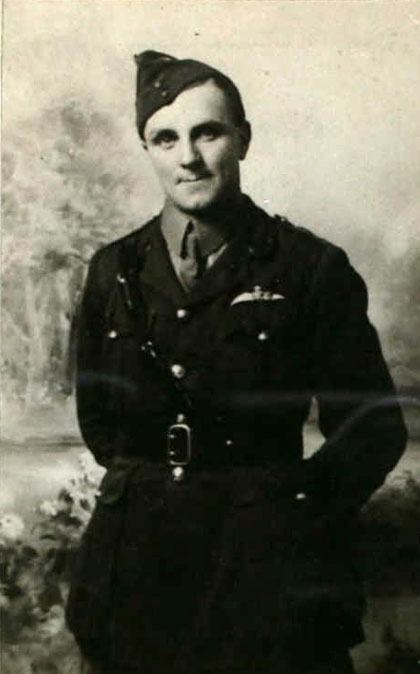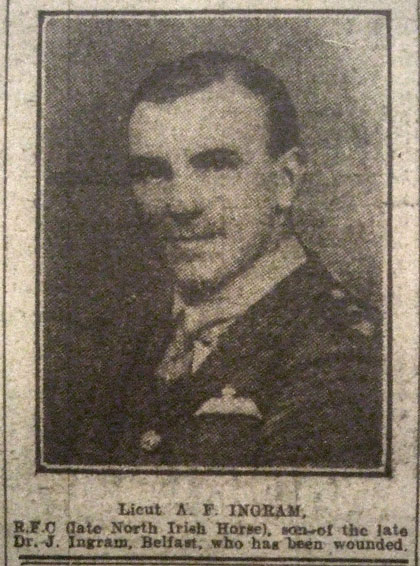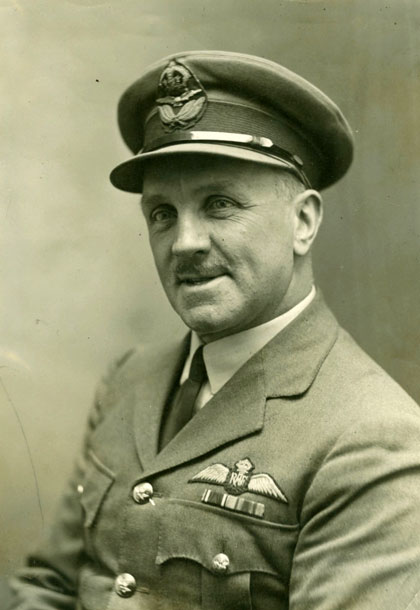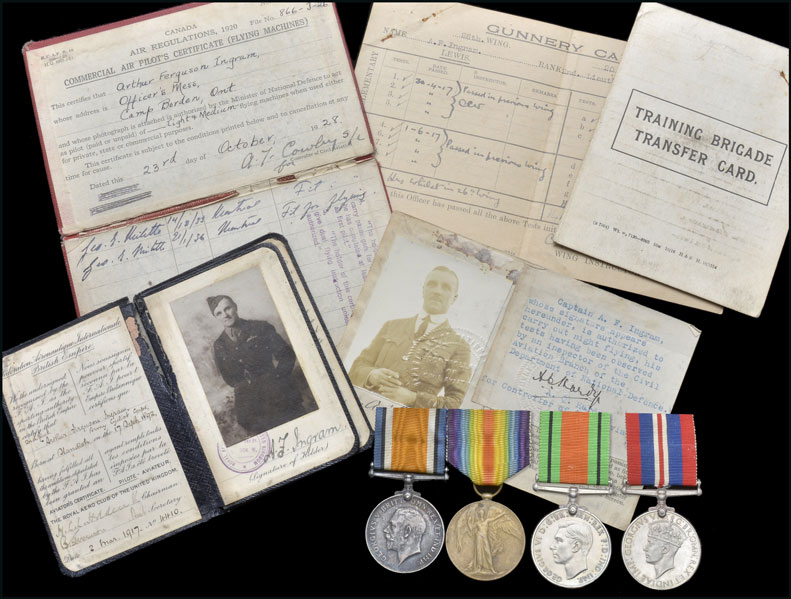Wing Commander Arthur Ferguson Ingram

Arthur Ferguson Ingram was born on 17 September 1892 at Standish, Lancashire, the only son of Irish-born physician and surgeon Dr Joseph Ingram. He was educated at Worksop College, Nottinghamshire, where he served in the college OTC from 1908 to 1910. Soon after, he moved to Ireland – by 1911 he was living with his uncle, farmer John Ingram, at Tirfergus, Tirkelly, County Down.
On 16 April 1913 he married Marie Louise (Louie) Dugan, daughter of David Dugan Esq of The Whitegates, Rathfriland, County Down, at the Newcastle Presbyterian Church. Their child, Stanley Lester Joseph, was born at Tierfergus on 23 September 1915.
Soon after he arrived in Ireland, Ingram enlisted in the North Irish Horse, though the period of his service and his regimental number are not known at present.
Like his father, Ingram studied at Queen's University, Belfast. He joined the university OTC in March 1915 and two months later applied for a commission in the infantry. On 3 June 1915 he was appointed 2nd lieutenant and posted to the 10th Battalion, Leicestershire Regiment, at Fort Nelson, Farnham. On 31 October he transferred to the Army Cyclist Corps and was posted to the 41st Divisional Cyclist Company.
On 20 April 1916 Ingram faced a General Court-Martial at Aldershot for having "absented himself without leave from Reveille on the 5th April 1916 until the 10th April 1916". He pleaded guilty and was sentenced to have his seniority as 2nd lieutenant moved to 3 April 1916, together with a severe reprimand.
Ingram was attached to the Royal Flying Corps on 3 October 1916 and was granted his Aviator’s Certificate on 2 March 1917. He was sent to Egypt in early 1917, joining No.57 Reserve Squadron, 20th Wing, but came down with dysentery and was sent home in May. He was formally transferred to the Royal Flying Corps as a 2nd lieutenant on 4 July 1917.
On 11 April 1917 a young woman, Doris Ada Victoria Naxton, of Cape House, George Street, Reading, wrote to authorities about Ingram:
Dear Sirs
I am writing with the hope that the readers of this will advise me and help me to have justice done.
In October last an officer of the R.F.C. late of the Army Cyclist Corps T.C. Chiselden Wiltshire named 2 Lt. A.F. Ingram took me out and whilst under the influence of drink took advantage of me. I leave you to guess the consequences which I alone have to bear, I was until then a respectable and straightforward business girl, I only have the money I earn at shop and I have scarcely any relatives I can ask help of so you can imagine how I am situated.
2 Lt. A.F. Ingram left Reading fully knowing the true facts of the case in November for Doncaster where he joined the 41st Reserve squadron R.F.C. he left there early in January for Egypt he has refused to answer all letters I have sent to him, if you could let me have his private address it [would] be of great use to me as I must have help as the time is growing short.
I might mention my age is 20 this month.
Trusting you will do your utmost to help and advise me.
Yours Faithfully
D.A. Naxton"
The Army offered her no assistance.
Ingram spent time at the RFC's 20 Training Squadron at Wyton, Huntingdonshire, and was promoted to lieutenant on 3 October 1917. In August or September 1917 he was sent to France, joining No.27 Squadron on 7 September, which was flying Martinsyde 'Elephant' bombers. His first mission was on 15 September 1917, attacking the Iwuy ammunition dump. In an operation on 16 September, bombing Hooglede, his formation was attacked by 10 Albatross scouts and one Martinsyde was shot down in a running fight back to the British lines. The Belfast Weekly Telegraph later reported:
In September he had experience of being brought down in flames, but escaped with a few slight burns.
Ingram's next raid was on Ath Station, 24 September, then Ledeghem Station, 14 October and Gontrode Aerodrome on 1 November. On 1 November he got lost on his way to bomb Poperinghe but eventually managed to find his way home. On 28 November, flying a D.H.4, he had to make a forced landing near Bethune due to engine failure. His last bombing run was on 18 December in an attack on Menin.
On Christmas Day 1917 Ingram was returning to his billet over slippery ground when he slipped and fell into a trench, fracturing his right fibula. He was evacuated to England on 31 December where he was admitted to Lady Maynell's Hospital, Lennox Gardens, London. Later transferred to John Leigh Hospital for Officers, Altrincham, Cheshire, Ingram recovered gradually, but saw no further overseas service during the war.
He was transferred to the RAF's unemployed list on 18 October 1919, but took up a short service commission as a flying officer from 21 August 1920. In July 1925 he was promoted from flying officer to flight lieutenant, and on 21 August 1927 was transferred to the Class A Reserve. On 15 January 1928 he resigned his commission in order to take up a commission with the Royal Canadian Air Force. While in Canada he served as a pilot with Canadian Airways Ltd.
Ingram later returned to England. He was listed as a flight lieutenant in the RAF's officer reserve, Class C on 20 April 1936 and two years later transferred to Class CC. On the outbreak of war in September 1939 he was commissioned to the RAF's Volunteer Reserve. He relinquished his commission on 10 February 1954, with the rank of wing commander.
Ingram died at his home, 109 Longton Avenue, Sydenham, London, on 6 April 1966.



First image sourced from Ancestry.com. Second image, from the Belfast Evening Telegraph, kindly provided by Nigel Henderson, Researcher at History Hub Ulster (www.greatwarbelfastclippings.com). Third and fourth images and information about Ingram's flight record in 1917 sourced from an online auction website.
